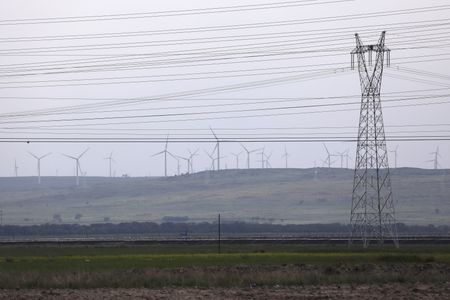By Colleen Howe
BEIJING (Reuters) – China’s latest monthly power report excluded data on usage rates by generation source, after recent data showed declining utilisation at renewable power plants, a trend that was expected to continue.
In a monthly data release on Friday, China’s energy administration published only the average operating hours of all types of power plants for January to May. Previous data releases had broken down the statistics by generation source, including hydro, thermal, nuclear, wind, and solar generation.
Usage rates for wind and solar had been expected to drop further after the government relaxed rules on renewable power utilisation in May.
The report did not give a reason for the change and China’s energy administration did not immediately respond to a request for comment.
The previous month’s data release – which captured January-April and was the last to include the detailed statistics – showed that solar and wind plant utilisation fell while hydro and thermal plant utilisation increased.
In the first four months of the year, the average operating hours of wind and solar power plants dropped by 77 hours and 42 hours to 789 and 373 hours, respectively. Hydro plant operating hours rose by 48 hours to 783 hours on average and thermal power plants rose by 23 hours to 1,448 hours, respectively.
China’s cabinet said in a CO2 action plan on May 29 that it would increase the limit on renewable power curtailment from 5% to 10%, while also accelerating plans to build ultra-high voltage transmission lines.
Curtailment is when grid managers stop a certain amount of supply coming onto the grid to maintain balances with demand.
The previous limit of 5% was in line with rates of 1.5-4% in most big markets, according to the International Energy Agency.
The change is expected to allow more renewable capacity to be built, but at lower utilisation rates.
Average utilisation hours of all power generators surveyed were 1,372 during the first five months of the year, 59 hours lower than in the same period of 2023, according to the energy bureau data on Friday.
Last August, China suspended the release of youth unemployment data, which had hit record highs, before resuming the reports in January with a new methodology that excludes students.
(Reporting by Colleen Howe; Editing by Bernadette Baum)









